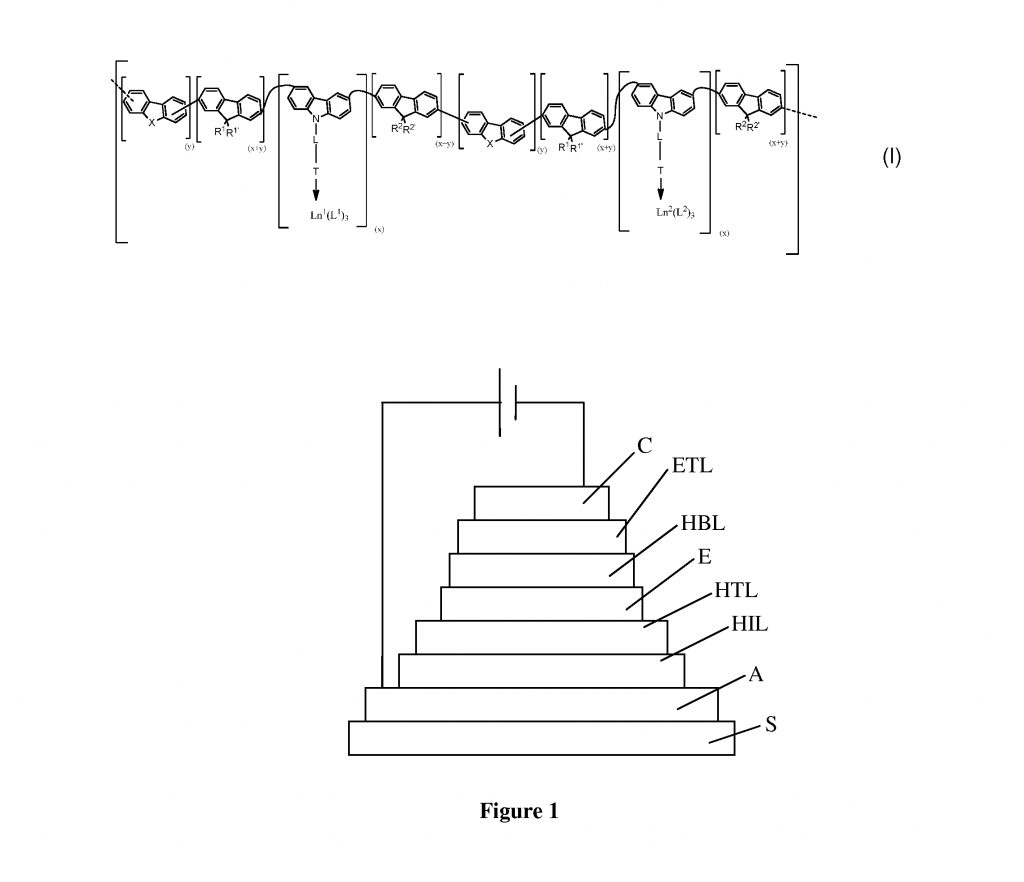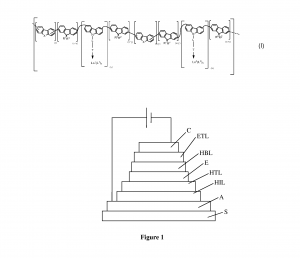Nouveaux metallopolymeres et leur utilisation
L'invention concerne des métallopolymères de formule (I) dans laquelle R1 et R1 sont indépendamment l'un de l'autre un groupement alkyle en C2-C10; R2 et R2' sont indépendamment l'un de l'autre un groupement alkyle en C2-C10; X est CR3R3' ou NR4; R 3 et R3' sont indépendamment l'un de l'autre un groupement alkyle en C2-C10; R4 est un groupement alkyle en C2-C10; L est un groupement alkylène en C4-C10; Ln1 et Ln2 sont indépendamment l'un de l'autre choisis parmi les cations de lanthanides; L1 et L2 sont indépendamment l'un de l'autre choisis parmi les ligands â-dicétonates; T est une base de Lewis neutre bidendate comportant deux atomes d'azote coordinants; → représente une coordination du groupement T via les deux atomes d'azote de T à Ln1 et Ln2 respectivement; Ln1 et Ln2 sont indépendamment l'un de l'autre choisis parmi les cations de lanthanides; L1 et L2 sont indépendamment l'un de l'autre choisis parmi les ligands mono-anioniques β-dicétonates, picolinates ou dipicolinates; x est compris entre 0,01 et 0,50; y est compris entre 0 et 0,49, la somme de x+y étant égale à 0,50, et leur utilisation dans des diodes électroluminescentes polymères.
Contact CEA : B. Geffroy (NIMBE/LICSEN).
Novel metallopolymers and use thereof (WIPO link)
The invention concerns metallopolymers of formula (I) in which R1 and R1 are, independently of each other, a C2-C10 alkyl group; R2 and R2' are, independently of each other, a C2-C10 alkyl group; X is CR3R3' or NR4; R3and R3' are, independently of each other, a C2-C10 alkyl group; R4 is a C2-C10 alkyl group; L is a C4-C10 alkylene group; Ln1 and Ln2 are, independently of each other, chosen from the lanthanide cations; L1 and L2are, independently of each other, chosen from the α-diketonate ligands; T is a neutral bidentate Lewis base comprising two coordinating nitrogen atoms; → represents a coordination of group T via the two nitrogen atoms of T to Ln1 and Ln2 respectively; Ln1 and Ln2 are, independently of each other, chosen from the lanthanide cations; L1 and L2 are, independently of each other, chosen from the β-diketonate, picolinate or dipicolinate monoanionic ligands; x is between 0.01 and 0.50; y is between 0 and 0.49, the sum of x+y being equal to 0.50, and the use thereof in polymer light-emitting diodes.
Contact CEA: B. Geffroy (NIMBE/LICSEN).



